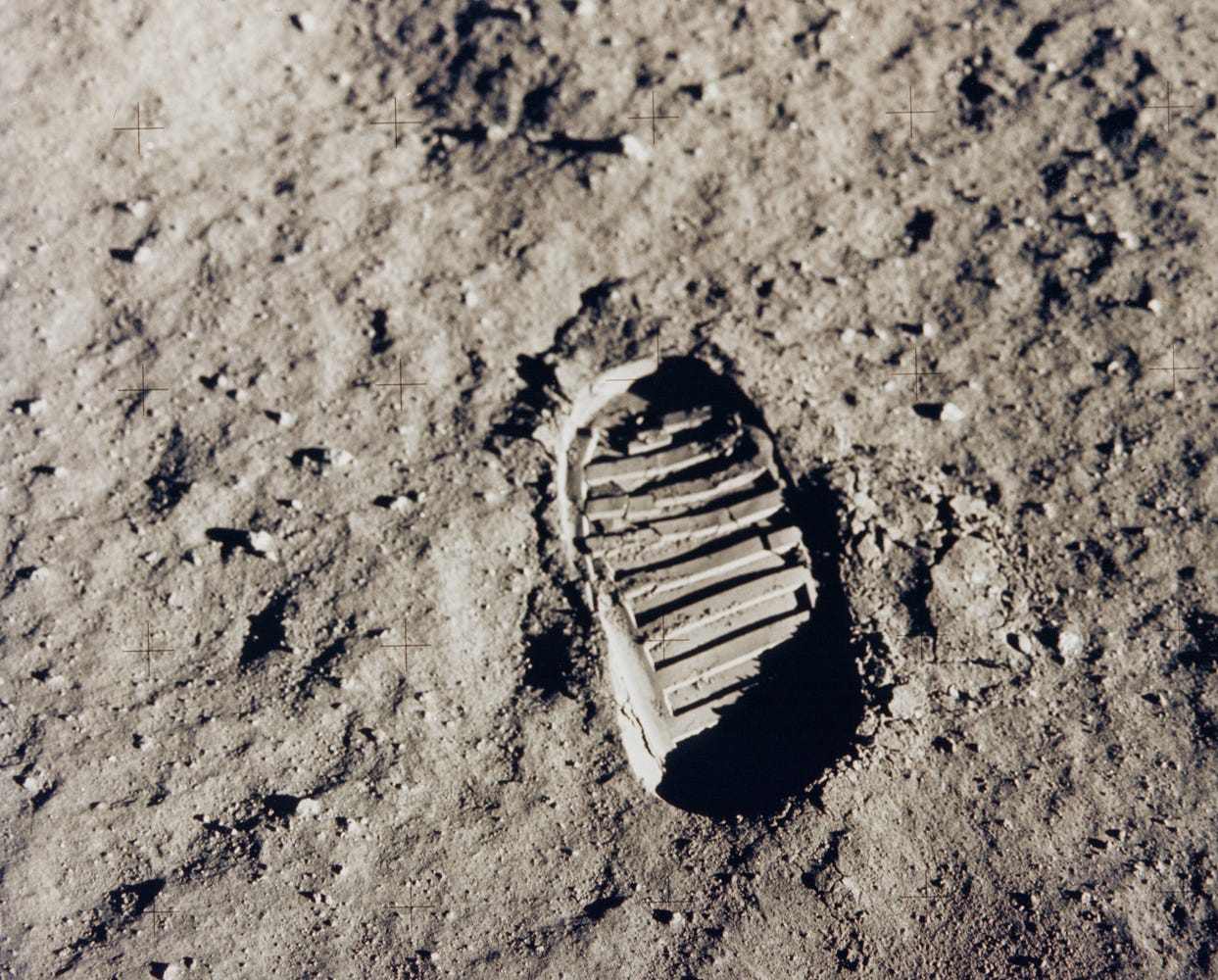Reading menu: The Apollo Moon landings
In what is considered to be the biggest technological leap of all time, NASA successfully landed twelve astronauts on the Moon between 1969 to 1972. Naturally, there is a lot of Apollo content on the web, including an extensive set of NASA documents. Since all of it can get pretty overwhelming, I’ve compiled a curated list of Apollo content for you to enjoy.

The ambition to send humans all the way to the Moon demanded an extremely powerful rocket. Without the mighty Saturn V, Apollo wouldn’t have happened. Much like how the Soviet Union couldn’t land cosmonauts on the Moon because their equivalent rocket, the N1, kept failing. Here is the story of how the Saturn V was conceived and the long road it took to get the beast to the launch pad and make Apollo happen.
Each successful Apollo mission visited a distinct feature of the Moon that would help us paint a more holistic picture of the Moon’s past. Here’s an overview of the geology of these sites and scientific facts learnt by exploring them.
The Apollo missions returned a total of 382 kilograms of lunar soil and rocks samples to Earth. These samples are analyzed even today in laboratories around the world. In the following article of mine, which The Planetary Society published and featured in its special coverage for the 50th Apollo anniversary, I take a detailed look at how Apollo changed our understanding of the Moon’s origin as well as that of Earth’s!
The way the Apollo samples are preserved, processed and sent to laboratories is intriguing. The sheer level of cleanliness required to handle extraterrestrial samples like these matches that of how we study viruses on Earth. That’s because it’s important to preserve the samples in their original state as much as possible otherwise their scientific value gets destroyed if exposed to Earth’s environment. Here’s a video tour of the dedicated sample hosting facility at NASA’s Johnson Space Center.
Getting access to that place is probably going to be difficult for average joes like you and me. But there is way to see those samples from a website. Project virtualmicroscope.org has made available more than 500 Apollo samples to see with a virtual microscope on the website’s Apollo section.
NASA launched the Lunar Reconnaissance Orbiter (LRO) in 2009 to produce the highest resolution Moon maps, including images, topography, temperatures, etc. Its extensive dataset has helped plan nearly all modern-day Moon landing missions and will help future ones too, like those part of NASA’s Artemis human landing program. With its amazing capability, LRO has shot images of every Apollo landing site. You can actually see the spacecraft modules and other hardware, and even tracks left by astronauts and the rovers they drove in LRO’s images!
On my ‘satellite’ (side) project Luna Sights, I have interesting stories on some Apollo landing sites and also sites for future Apollo missions but which ultimately didn’t happen.
→ Browse the Blog | About | Donate ♡
